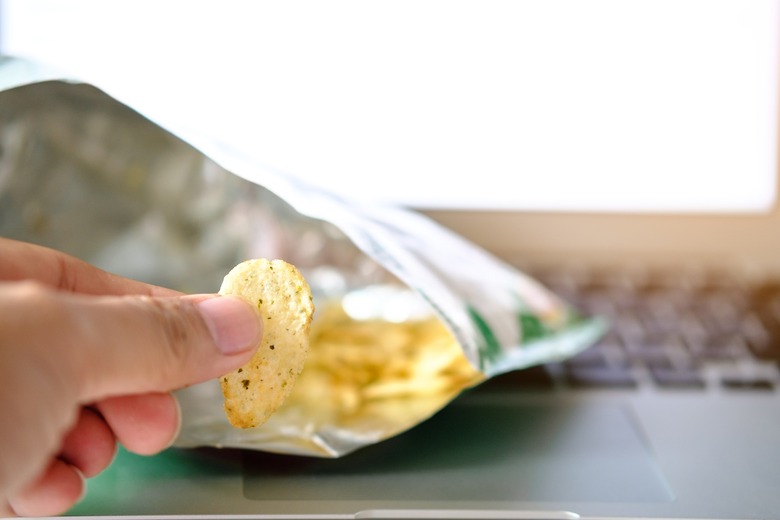Serving Sizes Are Total BS: Here's How Much You Should Really Eat
"The serving size is one," a friend of mine cajoles every time we indulge in some comforting, fattening snack. Grabbing a pint of Ben & Jerry's, chowing on an opened bag of potato chips, or dipping cracker after cracker into a trough of hummus become mitigated offenses with this sarcastic remark; I laugh gratefully every time. While pints of ice cream and bags of greasy chips are questionable, surely eating more than two tablespoons at a time of hummus can't be that bad for you. Right?
Serving sizes are so confusing. Why can't I eat a bigger spoonful of hummus or a whole avocado? Science tells us that my dietary needs are different than anyone else's, that no two bodies need to eat the same. But serving sizes imply the exact opposite.
It seems that they're meant to be there as a gentle reminder of portion control — an accurate, educated read on how much you should eat of any given food. But the truth is, those serving sizes aren't made with you in mind, and the tiny numbers on the side of the package are complete and total BS.
The idea originated in 1990, when the Nutrition Labeling and Education Act (NLEA) mandated that nutritional information be displayed on food and drink products. The quantification of food implied that either companies needed to display the information for the whole package (e.g., this pint of ice cream contains X number of calories) or delineate a certain portion. Understandably, they opted for the latter. After all, my friend's "whole pint of ice cream" habit isn't exactly an everyday thing. A serving size allocation is much more useful for everyday estimations and saves the consumer from some tedious math. If I ate one sixth of the bag, that's 1200 divided by six...
What the NLEA did not recommend was giving consumers a limit on how much of a food they should eat. For this reason, serving sizes aren't nutritional recommendations — in fact, they're not recommendations at all. They're simply the average amount of the food in question that the average American eats.
But doesn't the average American eat too much?
Maybe, maybe not. But regardless, basing your intake on the mouths of the rest of America makes no logical sense.
The term "serving size" has people confused. The term, paired with USDA recommendations to eat a certain number of servings of each food group each day, implies that one serving of a food is the "right" amount to eat — and that eating more than that is "wrong" or less nutritious somehow. But serving sizes, put forth by the NLEA and corresponding research by the food industry, have no relation to individual nutritional guidelines.
So how much should I eat?
However much you want. Seriously.
A comprehensive review of studies relating to what they call intuitive eating, or the practice of "dietary intake based on internal cues of hunger and fullness, body acceptance, and making behavior choices based on health as well as enjoyment," revealed that the practice results in improvements in eating habits, lifestyle, and even body image. The results expressed that intuitive eaters "also experienced improved psychological health as measured by depression, ineffectiveness, anxiety, self-esteem, negative affect, and quality of life."
Sounds good to us. I know my quality of life is significantly improved when I don't have to measure out my hummus before dipping — and yours could be, too. The serving size probably isn't "one" — but it actually should be however much food you're feeling. There's nothing impressive (or even meaningful) about a food that amounts to less than 100 calories per serving.
